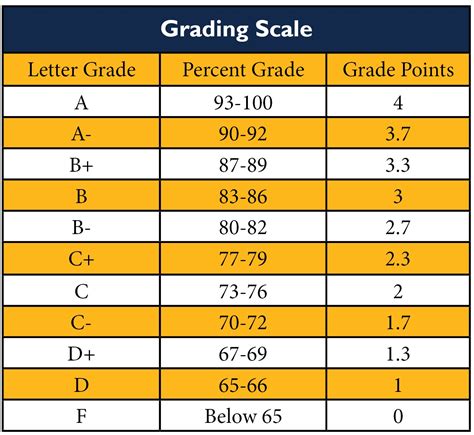Introduction

The letter grade system is a widely used method of evaluating academic performance. It assigns students a letter grade (A, B, C, D, or F) based on their overall achievement in a course. This system has been in use for centuries and has become an ingrained part of our educational system. However, the letter grade system has come under increasing scrutiny in recent years, with some critics arguing that it is outdated and ineffective.
Criticisms of the Letter Grade System
There are several key criticisms of the letter grade system. First, critics argue that the system is too simplistic and does not provide a nuanced assessment of student achievement. A student who earns a B+ may have performed significantly better than a student who earns a B-, but the letter grade system does not reflect this difference. Second, critics argue that the letter grade system is too focused on summative assessment, which measures student achievement at the end of a course. This can lead to students feeling stressed and anxious about their grades, and it can also discourage them from taking risks and experimenting with new learning strategies. Third, critics argue that the letter grade system can be biased against certain students, such as those from underrepresented groups or those who have learning disabilities.
Alternatives to the Letter Grade System
Given the criticisms of the letter grade system, several alternatives have been proposed. One popular alternative is standards-based grading, which measures student achievement against a set of pre-determined standards. This system provides a more detailed assessment of student learning and can help to reduce stress and anxiety. Another alternative is portfolio assessment, which involves students collecting and submitting a body of work that demonstrates their learning. This system allows students to showcase their strengths and can help them to develop a sense of ownership over their learning.
The Future of the Letter Grade System
It is unclear whether the letter grade system will continue to be the dominant method of evaluating student achievement in the future. However, it is clear that the system is facing increasing scrutiny and that there is a growing interest in alternative assessment methods. As educators continue to explore new and innovative ways to assess student learning, it is likely that the letter grade system will evolve or be replaced by a more equitable and effective system.
Key Points
- The letter grade system has been used for centuries to evaluate student achievement.
- There are several criticisms of the letter grade system, including its simplicity, focus on summative assessment, and potential bias.
- Several alternatives to the letter grade system have been proposed, such as standards-based grading and portfolio assessment.
- The future of the letter grade system is uncertain, but it is facing increasing scrutiny and there is a growing interest in alternative assessment methods.
FAQs
- What are the advantages of the letter grade system?
- The letter grade system is a familiar and easy-to-understand way to communicate student achievement.
- The letter grade system can help to motivate students to learn.
- The letter grade system can help to prepare students for the workforce, where they will be evaluated based on their performance.
- What are the disadvantages of the letter grade system?
- The letter grade system is too simplistic and does not provide a nuanced assessment of student achievement.
- The letter grade system is too focused on summative assessment, which can lead to stress and anxiety.
- The letter grade system can be biased against certain students, such as those from underrepresented groups or those who have learning disabilities.
- What are some alternatives to the letter grade system?
- Standards-based grading
- Portfolio assessment
- Competency-based learning
- What is the future of the letter grade system?
- The future of the letter grade system is uncertain, but it is facing increasing scrutiny and there is a growing interest in alternative assessment methods. It is likely that the letter grade system will evolve or be replaced by a more equitable and effective system.
Tables
Table 1: Advantages and Disadvantages of the Letter Grade System
| Advantage | Disadvantage |
|---|---|
| Familiar and easy to understand | Too simplistic |
| Can motivate students to learn | Too focused on summative assessment |
| Can help to prepare students for the workforce | Can be biased against certain students |
Table 2: Alternatives to the Letter Grade System
| Alternative | Description |
|---|---|
| Standards-based grading | Measures student achievement against a set of pre-determined standards |
| Portfolio assessment | Involves students collecting and submitting a body of work that demonstrates their learning |
| Competency-based learning | Focuses on student mastery of specific skills and knowledge |
Table 3: Criticisms of the Letter Grade System
| Criticism | Explanation |
|---|---|
| Too simplistic | Does not provide a nuanced assessment of student achievement |
| Too focused on summative assessment | Can lead to stress and anxiety |
| Can be biased against certain students | May disadvantage students from underrepresented groups or those with learning disabilities |
Table 4: Future of the Letter Grade System
| Scenario | Likelihood |
|---|---|
| Letter grade system remains dominant | Low |
| Letter grade system evolves | Medium |
| Letter grade system is replaced by a more equitable and effective system | High |
